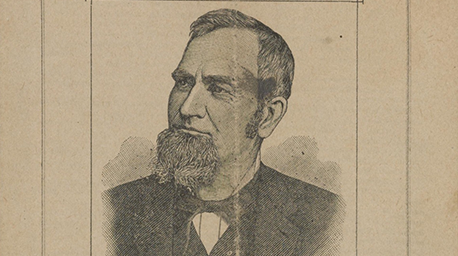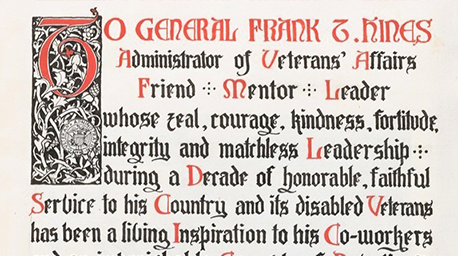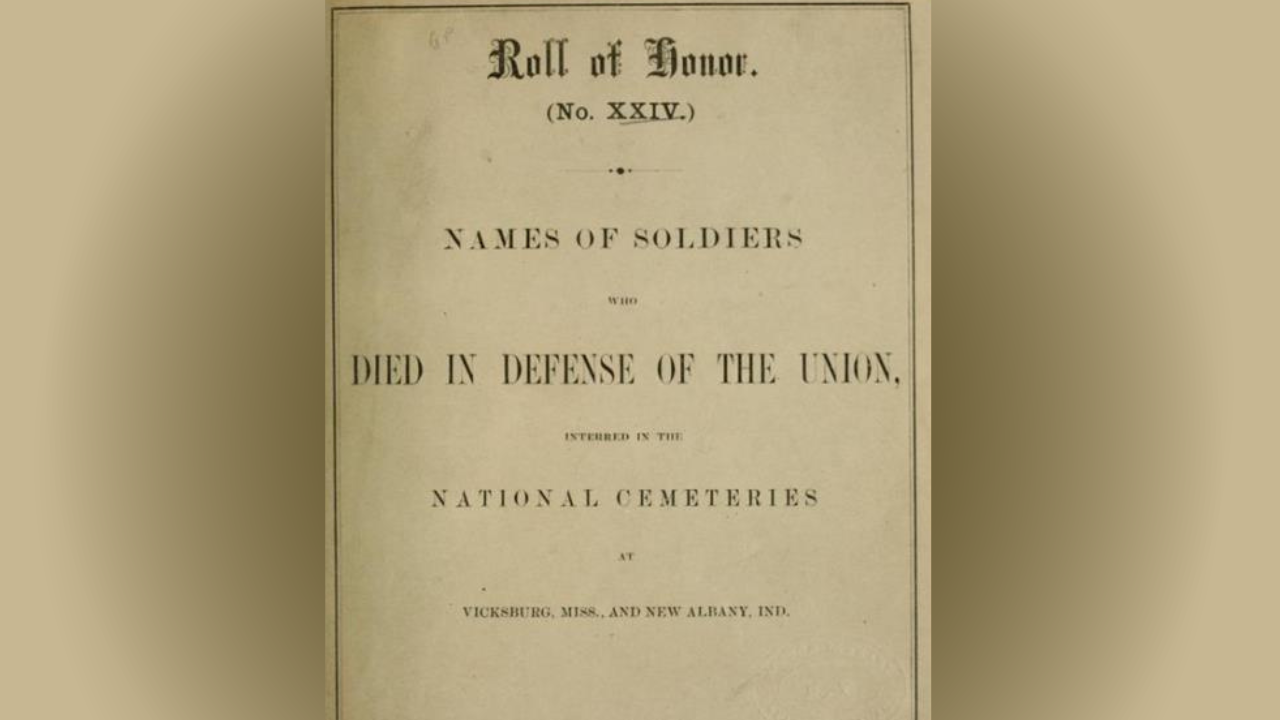
History of VA in 100 Objects
Object 96: Postcard of Veterans Vocational School
In 1918, the government created the first nationwide vocational training system to help disabled Veterans acquire new occupational skills and find meaningful work. Over the next 10 years, more than 100,000 Veterans completed training programs in every field from agriculture and manufacturing to business and photography.

History of VA in 100 Objects
Object 95: 1840 Census of Pensioners
In a first, the 1840 census collected data on Veterans and widows receiving a pension from the federal government. The government published its findings in a stand-alone volume titled “A Census of Pensioners for Revolutionary or Military Services.”

History of VA in 100 Objects
Object 94: Southern Branch of the National Home
The Southern Branch of the National Home for Disabled Volunteer Soldiers opened in Hampton, Virginia, in late 1870. The circumstances surrounding the purchase of the property, however, prompted an investigation into the first president of the National Home’s Board of Managers, Benjamin Butler.

History of VA in 100 Objects
Object 93: Occupational Therapy Floor Loom
During World War I and afterwards, the United States committed to rehabilitating sick and wounded soldiers so they could resume productive lives in the civilian workforce. The emerging field of occupational therapy played a crucial role in the rehabilitative process.

History of VA in 100 Objects
Object 92: Pension Attorney Promotional Pamphlet
The expansion of the Civil War pension system was a cash windfall for pension attorneys. These lawyers used their legal know-how to help Veterans obtain benefits, but they were also accused of exploiting their clients and fleecing the government.

History of VA in 100 Objects
Object 91: Hines Scrapbook Dedication
In 1933, VA staff presented agency chief Frank Hines with a scrapbook commemorating his ten years of service to Veterans. Intended as a personal keepsake for Hines, the scrapbook also offers a snapshot of a particular time in VA history.

History of VA in 100 Objects
Object 90: Pearl Harbor Unknowns Marker
Seamen 1st Class Raymond Emory survived the attack on Pearl Harbor. Decades later, his research and advocacy led the government to add ship names to the markers of the Pearl Harbor unknowns interred in the National Cemetery of the Pacific.

History of VA in 100 Objects
Object 89: VA Film “You Can Lick TB” (1949)
In 1949, VA produced a 19-minute film titled “You Can Lick TB.” The film follows a fictional conversation between a bedridden Veteran with tuberculosis and his VA doctor, dramatizing through brief vignettes the different stages of TB treatment and recovery.

History of VA in 100 Objects
Object 88: Civil War Nurses
During the Civil War, thousands of women served as nurses for the Union Army. Most had no prior medical training, but they volunteered out of a desire to support family members and other loved ones fighting in the war. Female nurses cared for soldiers in city infirmaries, on hospital ships, and even on the battlefield, enduring hardships and sometimes putting their own lives in danger to minister to the injured.
Despite the invaluable service they rendered, Union nurses received no federal benefits after the war. Women-led organizations such as the Woman’s Relief Corps spearheaded efforts to compensate former nurses for their service. In 1892, Congress finally acceded to their demands.

History of VA in 100 Objects
Object 87: Shoulder Patch For Veterans Administration Military Personnel in World War II
For a time during and after World War II, active duty military personnel were assigned to the Veterans Administration.
That assignment was represented by a blue circle with a golden phoenix rising from the ashes. This was the shoulder patch worn by the more than 1,000 physicians, dentists, and other medical professionals serving in the U.S. Army at VA medical centers.
This was the same patch worn by Gen. Omar Bradley during his time as VA administrator after the war concluded.

History of VA in 100 Objects
Object 86: The Roll of Honor
“The following pages are devoted to the memory of those heroes who have given up their lives upon the altar of their country, in defense of the American Union.”
So opened the preface to the first volume of the Roll of Honor, a compendium of over 300,000 Federal soldiers who died during the Civil War and were interred in national and other cemeteries. The genesis of this 27-volume collection published between 1865 and 1871 can be traced to Quartermaster General Montgomery C. Meigs and the department he oversaw for a remarkable 21 years from 1861 to 1882.

History of VA in 100 Objects
Object 85: Congressman Claypool’s “$1 Per Day Pension” Ribbon
Founded in 1866 as fraternal organization for Union Veterans, the Grand Army of the Republic (GAR) embraced a new mission in the 1880s: political activism. The GAR formed a pension committee in 1881 for the express purpose of lobbying Congress for more generous pension benefits.
An artifact from the political wrangling over pensions is now part of the permanent collection of the National VA History Center in Dayton, Ohio. The item is a small pension ribbon displaying the message: “I endorse the $1 per day pension as recommended by the Departments of Ohio and Indiana G.A.R.” The button attached to the ribbon features two American flags and the phrase “saved by the boys of ’61-65.” The back of the ribbon bears the signature of Horatio C. Claypool, a Democratic judge who ran for the seat in Ohio’s eleventh Congressional district in the 1910 mid-term elections.


